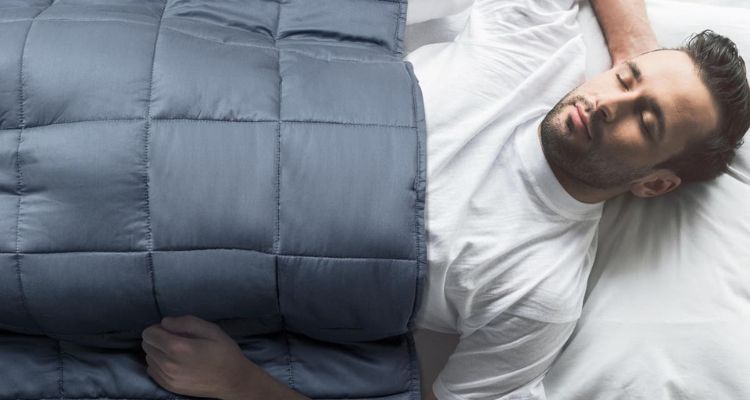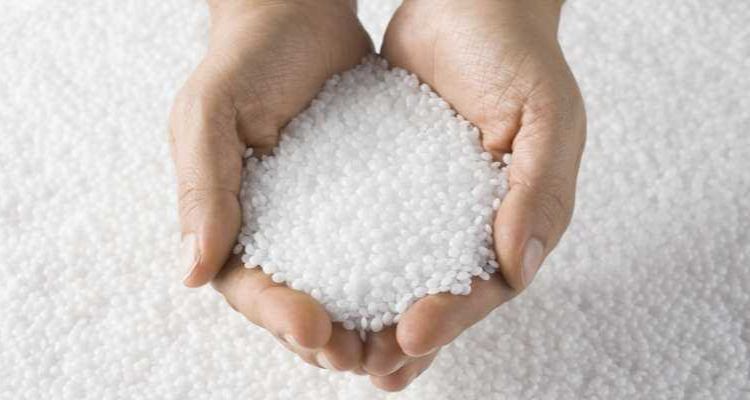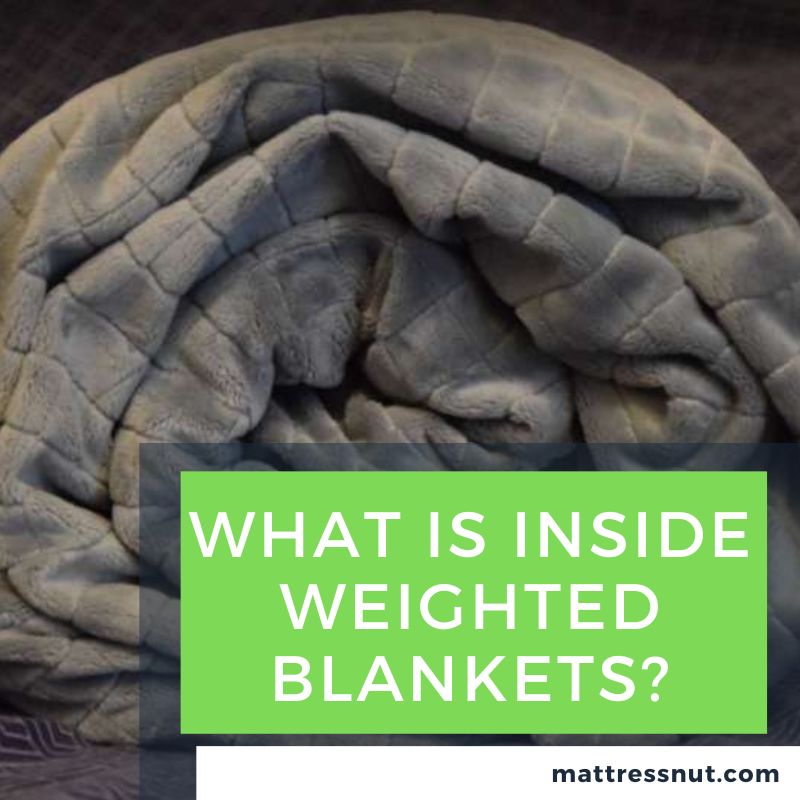Individuals of almost every age use blankets for different reasons. Comfort, self-protection from weather, and physical sensations of pairing them with sleep are some common reasons. These blankets are gravity blankets to assist a healthy sleep and reduce anxiety.
As a therapeutic tool, these blankets were first used to help treat people with neurological and developmental disorders, dementia, and various other mental conditions. However, they are now undoubtedly becoming a symbol of many people’s stress relief and healthy sleeping habits.
The below study will help you explain the construction and materials of these blankets.
What Are Weighted Blankets Made of?
These blankets include a cloth cover to cushion the inside weight and the user’s body. Their manufacturing includes cotton, linen, bamboo, flannel, and rayon.

The filling inside could be microfiber beads, steel sand, pebbles, beads, or small grains. All these materials have their benefits and flaws; therefore, studying them before buying is beneficial.
How Are Weighted Blankets Made?
They have soft exterior fabrics like linen, cotton, and fleece. These blankets are even from the inside with materials that help them to weigh down, such as beads. Beads, along with similar materials, are mostly sewn into small pockets throughout the blanket, which prevents them from splattering outside.
The usage of these blankets has relieved many individuals with the following issues:
Insomnia:
They help to create deep pressure therapy in some people, which further helps to increase the production of serotonin (Happy Hormones) and decreases the cortisol (Hormones that can make you stressful. This combination allows people to battle insomnia, leading to a comfortable sleep (also check the most comfortable mattresses).
Sensory Disorders:
These blankets help individuals against Autism spectrum disorders, including autism and Asperger’s, ultimately relieved from over-activity and stress.
Many individuals suffering from these sensory disorders get the overwhelming feeling of noise and touch. Therefore, the blankets can improve the condition of these individuals by soothing their stress and providing comfort in such situations.
Anxiety:
Many people experience anxiety at some point in their life. It does not matter regardless of how long an individual has suffered and how he got into it; anxiety always impacts their sleep and daily life (also check the top rated heavy blankets for anxiety). If not catered to at early stages, anxiety can lead to other mental and physical issues that may even become irreversible.
However, weighted blankets, to some extent, help their bodies and bring them to rest from their continuous life. This further helps reduce mental, emotional, and physical symptoms.
What are the commons Types of Fillings in Weighted Blankets?
The below study will help you understand the fill materials of these blankets and why they are heavy.
Micro Glass Beads:
These beads are a smooth and Eco-friendly substitute to plastic pellets, the most common materials in these blankets. Even though these plastic poly pellets are famous for readily available and cost factors, they aren’t non-toxic. They can even have a discomforting noise that many people would want to avoid.
These beads are typically denser than other materials, resulting in a slimmer and more mobile design. Being machine washable, micro glass beads material does cleaning and maintaining your blanket simple.

Sand:
Sand is mainly a mixture of synthetic and organic materials. When wet, this mixture can make it more prone to clumping together. You may have imagined this clumping can create a big problem washing these blankets.
Sometimes, they may not return to their original position before cleaning the machine. So, these fillings can potentially get messier than other materials. Therefore, check their stitching and material before buying.
Steel Beads:
Steel beads, and heat-treated micro balls, are the filling for the blankets. However, this heat-treating factor does not make the blankets wrap or dent by keeping them hard enough.
Due to their durability, heaviness, and machine washability, steel beads are the most common in making these blankets. These factors will require fewer units to attain the pressure and weight. For those prone to sound and cannot withstand much noise, these steel-beads blankets might not be a good option.
Pebbles:
It may be harder for you to believe that these pebbles are readily available in the backyard of your house or even at a local beach. They are cost-effective and organic but are not usually as comfortable as other materials.
While an organic option with different unique shapes and sizes, using rocks and pebbles as blanket materials makes it challenging to divide the weight equally. Organic and porous materials make it complex for these blankets to dry entirely after any wash.
Rice, Beans, and Other Grains as Fillers
Rice, corn barley, beans, pasta, and other grains are sometimes the fillings for these blankets. The purpose of using these foods is to provide adequate weight balance to these blankets since these foods are pretty cheaper and readily available.
However, on their downside, these food materials will start to deteriorate once they come into contact with water or even with time.
These items can make the blanket mold, create fungus and attract insects. The rotting smell would be intolerable for anyone, especially when they have paid a high price at the time of purchase. Furthermore, when they absorb water, these food items will start to lose their original shape and feel of the blanket. Therefore, we would not recommend using these food items in blankets.
Materials to Avoid in Weighted Blankets
This entirely depends upon the individual preferences regarding how they would react to the materials. However, always use organic and natural items as you can’t buy these blankets every other day.
Some people even prefer to avoid different plastic and chemical materials, but that is a matter of preference if they are not harmful. However, small amounts of plastic poly pellets are harmful due to toxins, fire retardants, and other preservatives.
What are Weighted Blanket Fillers?
“Filling” makes the blankets heavier, which helps to initiate deep touch pressure points in the full body (also check 10 great mattress toppers for pressure points). These blankets have many square pockets with weights stitched together.
The primary purpose of this square design is to keep the weight balance on the body, preventing the filling from sliding toward one side. The most popular materials are micro-glass beads, steel balls, plastic poly pellets, and sand.
What medical conditions can weighted blankets help?
Weighted blankets can aid several conditions, especially anxiety, autism, ADHD, insomnia, restless leg syndrome, and PTSD. The deep pressure simulation helps relieve stress and promote relaxation. However, those with respiratory issues or claustrophobia should avoid them.
Conclusion:
Above, we have studied these blankets’ benefits, the materials in their production, and which materials you should avoid during manufacturing. Deep pressure stimulants in these blankets help to activate serotonin and reduce cortisol. These hormones further lead to an increase in sleep-boosting hormones to make you sleep in a better way.
These blankets promote healthy and comfortable sleep and give you those cozy feelings you need, especially in winter (also check the best selling bed sheets for winter). However, these blankets might not be a good choice for hot sleepers or those who live in warmer areas (also check 10 great cooling mattresses for hot sleepers).
Weighted blankets material FAQs
Should Plastic and Other Chemicals Be Avoided In Weighted Blankets?
Some people avoid chemical-based materials for safety purposes. For example, polypropylene in plastic poly pellets comprises trace levels of pollutants, fire retardants, and preservatives. Even though this material is safe, you should prefer other chemical-free alternatives, such as glass or steel.
Are weighted blankets toxic?
These blankets are not toxic and are entirely safe, hypoallergenic, and free of harmful chemical substances. Anxiety and stress can cause during sleep if the size is too heavy against your body's limits. Therefore, you need to check this before you buy. Mostly, these blankets are safe to use throughout the night for a comfortable and long-lasting sleep.
Who should avoid weighted blankets?
Many people suffer from respiratory problems, lower blood pressure, type 2 diabetes, and asthma, avoid these blankets. Kids should not use these blankets; they might choke on the small pellets and glass beads if they fall out of the blanket.
Do weighted blankets affect blood pressure?
It can lower blood pressure, so you need to avoid this; however, no solid pieces of evidence are available to support this statement. Many health factors can associate with these blankets, but we cannot say with absolute certainty that these blankets can fluctuate your blood pressure.

